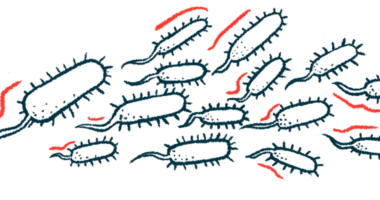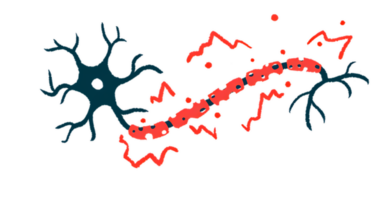Cutting Brain-gut Vagus Nerve Lessens Loss of Myelin in MS Mice
New research points to vagus nerve as key therapeutic target

Severing the lower part of the vagus nerve — one of the main neurological pathways that connects the brain to the gut — led to less myelin loss in a mouse model that’s commonly used to study multiple sclerosis (MS).
The findings suggest that the vagus nerve plays a role in demyelination in MS. Moreover, according to researchers, the results imply that therapeutic interventions targeting this nerve may be beneficial for MS patients.
“The relative abundances of some species of bacteria were correlated with demyelination … in the brain,” the team wrote.
The study, “Key role of the gut–microbiota–brain axis via the subdiaphragmatic vagus nerve in demyelination of the cuprizone-treated mouse brain,” was published in Neurobiology of Disease.
Targeting the causes of myelin loss
In MS, inflammation in the central nervous system (the brain and spinal cord) leads to demyelination, or the loss of the fatty myelin sheath that surrounds nerve fibers and helps them send electrical signals. A common model used to study the disease is feeding mice cuprizone (CPZ), a chemical that induces demyelination.
An emerging body of research has shown that the gut microbiome — the billions of bacteria and other microorganisms that live in the intestines — can influence the health and activity of the brain.
The vagus nerve, also called the vagal nerves, is the main neurological pathway that sends signals in the parasympathetic nervous system, which helps to control heart rate, immune activity, and digestion. This nerve plays a major role in the interface between the brain and the gut microbiome.
In this study, researchers in Japan tested the effects of subdiaphragmatic vagotomy (SDV) — a surgical procedure that severs the parts of the vagus nerve that connect to the intestines — in the CPZ model of demyelination. Mice underwent SDV or a sham operation one week before being fed CPZ-laced food for six weeks.
Results showed that mice given SDV had significantly less myelin loss after CPZ administration. The mice given SDV also weighed more, indicative of generally better health status after chronic exposure to the toxic chemical.
“These findings indicate that SDV can ameliorate CPZ-induced body weight gain and demyelination in mice,” the researchers wrote.
CPZ treatment leads to the activation of microglia, immune cells in the brain known to contribute to inflammation in MS and other neurological diseases. Analyses showed that SDV reduced microglial activation in mice given CPZ.
“Our data suggest that the vagus nerve may play a role in demyelination and microglial activation in the brains of MS patients,” the researchers wrote.
Further analyses were conducted of the mice’s gut microbiome, which showed significant differences in the types of bacteria most abundant in mice given SDV or a sham procedure. The data suggest “that SDV can restore CPZ-induced [bacterial diversity] abnormalities in the gut microbiota,” the researchers wrote.
The scientists also analyzed a broad panel of microbial metabolites — small molecules that are made by bacteria in the gut microbiome — in the mice’s blood. They identified 27 metabolites that were significantly altered by CPZ exposure. Notably, SDV led to normalization in levels of six of these metabolites.
Notably, levels of these six SDV-related metabolites showed statistically significant associations with the amount of myelin loss in the mice’s brains. Additional statistical tests showed an array of significant associations between changes in levels of different types of bacteria, levels of the metabolites, microglial activation, and the extent of myelin loss.
“The relative abundances of some species of bacteria were correlated with demyelination or microglial activation in the brain as well as with plasma metabolites,” the researchers concluded. “Taken together, our findings indicate that the gut–microbiota–brain axis might play a role in the demyelination of CPZ-treated mice via the subdiaphragmatic [under-the-diaphragm] vagus nerve.”
The researchers noted that vagus nerve stimulation, where gentle electric pulses are administered to the vagus nerve, is currently used to control certain forms of epilepsy. This form of therapy showed beneficial effects in a recent study done in a mouse model of MS.
“Given the crucial role of the vagus nerve in the gut–microbiota–brain axis, vagus nerve stimulation may be a promising therapeutic option for MS patients,” the researchers wrote. “It will be of great interest to investigate whether vagus nerve stimulation can improve clinical symptoms.”







